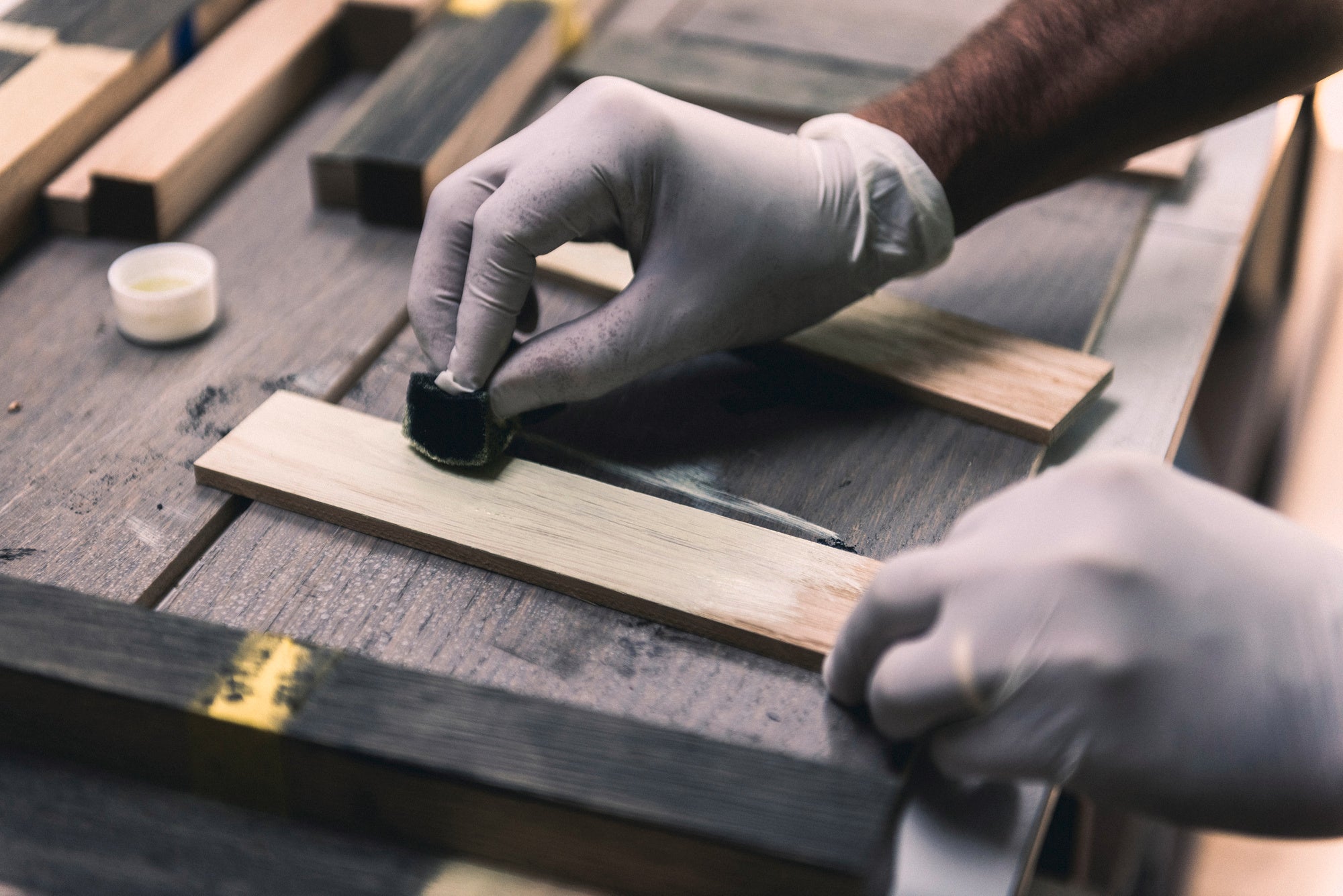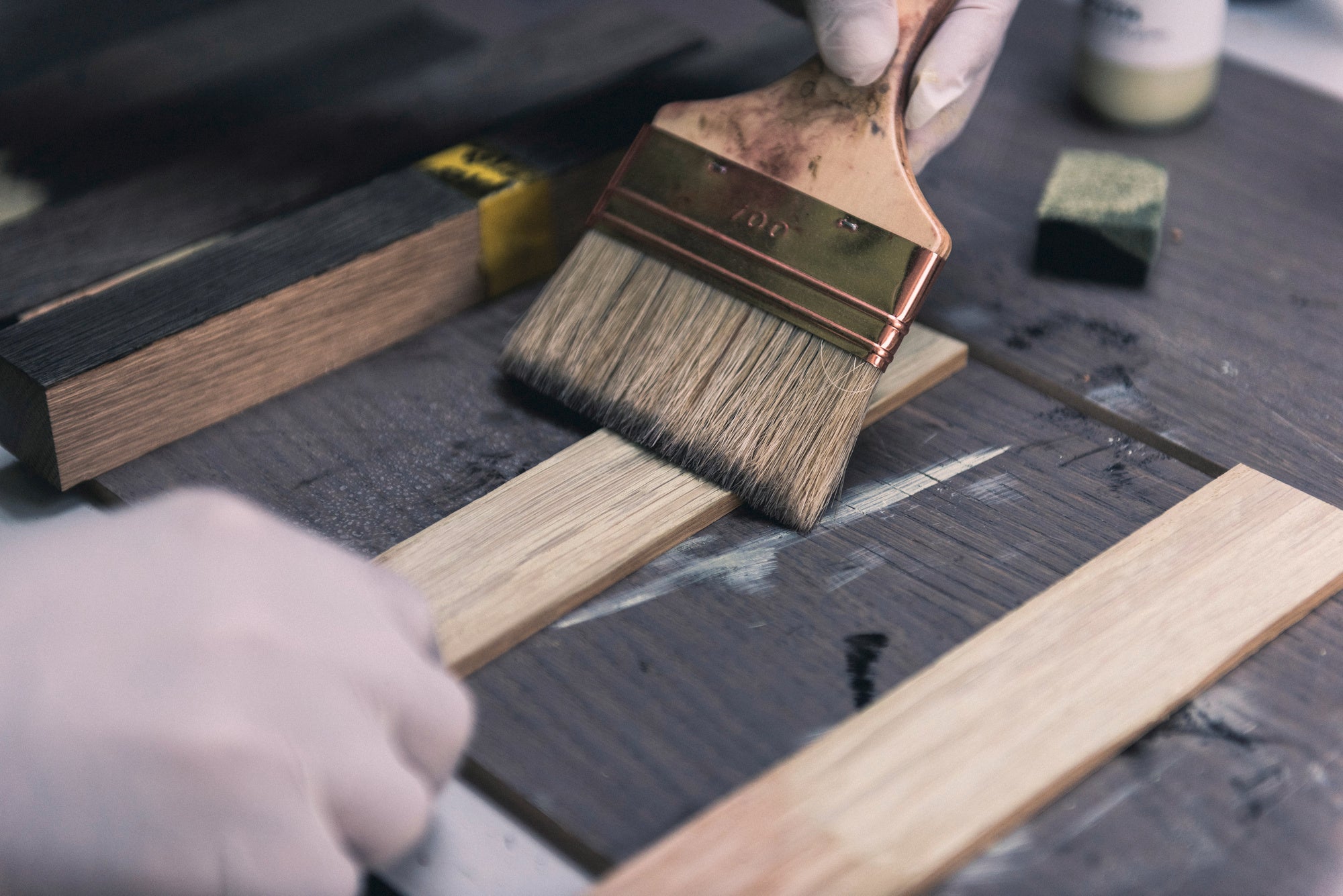
- date
27 October 2022
- tag
How to
Pictures section

"As long as they are good quality, both oil and varnish provide reliable protection.
Oil looks more natural than varnish, however, while matt varnish can have a very subtle effect and it can actually be hard to tell the difference between it and oil. The main difference is that varnish always creates a layer on top of the wood. The varnish layer seals the wood properly, so it is highly resistant to grease marks, making varnish a reliable choice for dining tables and kitchen worktops. On the other hand, if the varnish layer becomes worn, then you have to sand it back to bare wood and then apply a fresh coat of varnish.”
“Instead of forming a layer on top of the wood, oil is absorbed and fills up the wood pores, so water and other liquids cannot penetrate the wood. One advantage of oil is that the wood retains a more natural appearance.
Although you can use oil to finish parquet or kitchen worktops, you must then maintain the wood regularly and feed it with the right products. That keeps the wood looking its best and avoids the need to sand and re-oil it. If you're finishing horizontal furniture surfaces or wall panels, then wear and tear is obviously much less of an issue, so you can choose oil or varnish to suit your preferences."
"There are various price categories for oil and varnish and they mainly depend on the brand. As well as calculating the price per litre, remember that you'll need to apply two or three coats of varnish compared to just two applications for oil. Varnish also needs a thicker coat, so you'll need more product than you would for oil for the same surface area. So consumption is greater for varnish than for oil. Joiners tend to prefer a specific brand of oil or varnish and can advise you on which to choose."
Pictures section


"That depends on the type of product. Some – like Shinnoki panels – are prefinished with varnish, so you don't need to do anything else to them. With Querkus, on the other hand, you can choose whether you want it finished with oil or varnish, in consultation with a joiner."
"Wood is a sustainable natural product and it will always fade slightly over the years, thanks to sunlight. It is a living material, after all. But you can try to slow down the fading - with blinds, for example. If that isn't an option, you can choose a wood treatment that contains white pigmentation, which will reflect UV light and give the wood some additional protection. Really dark-tinted wood is another option, as the pigmentation and the layer of stain will stop it from fading quite as much."
"Stain and oil are two different products. You use stain to dye the wood first, before applying a layer of varnish or oil on top. That's because stain doesn't actually protect the wood. You can also skip the staining and just apply a coloured oil, which gives you colour and protection in just one product. On the other hand, that won't give you quite the same result as staining followed by oil. You also have much more choice of colours if you choose a stain."
Planning to use veneer?
Pictures section

